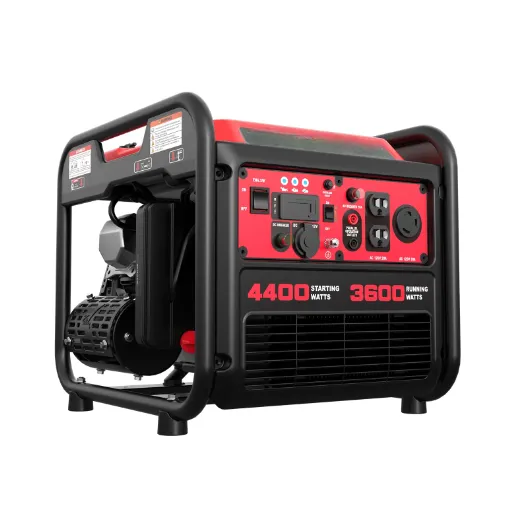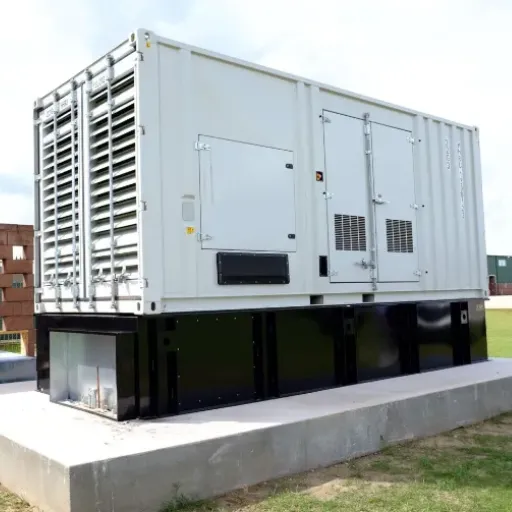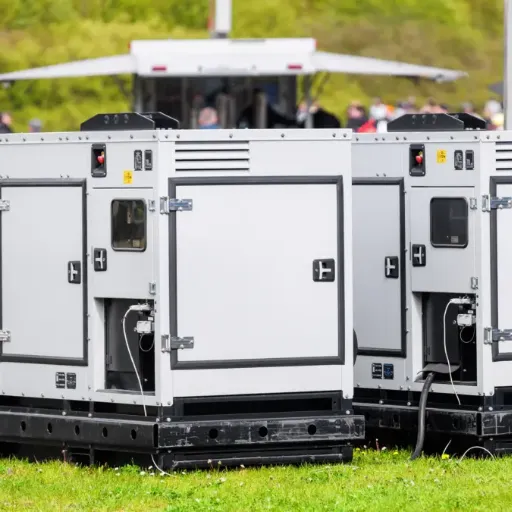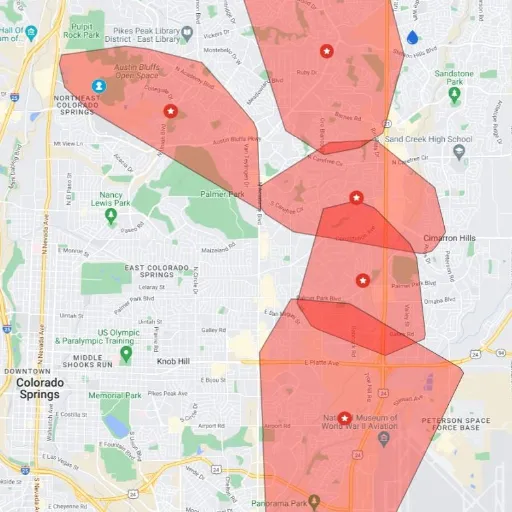When planning for a reliable power supply, especially during outages or in off-grid scenarios, understanding the exact power requirements of your appliances and devices is crucial. A generator sizing calculator can simplify this process by helping you determine the right generator capacity to meet your needs without overspending or risking underperformance. This article will guide you through the essentials of using a generator sizing calculator effectively, ensuring you make informed decisions that maximize efficiency and reliability. Whether you’re preparing for emergency power backup or planning a large-scale project, this guide will set the foundation for choosing the optimal generator with confidence.
How Do You Calculate Wattage for a Generator?
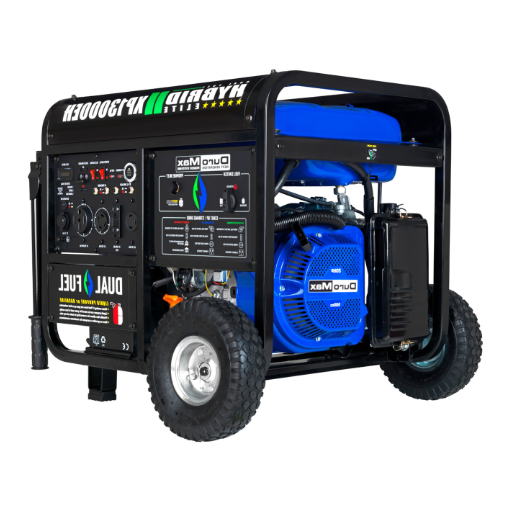
Understanding Your Power Requirements
Knowing your power needs helps in choosing the right generator. To get your wattage right, do the following:
- Include All Devices and Equipment: Determine every piece of equipment that the generator will power.
- Find Starting and Running Wattages: For each device, locate the starting (surge) wattage as well as the running wattage. This information can be found either in the user guides or on the product label.
- Add Starting Wattage: Include the highest starting wattage from any device. This guarantees that the generator will be powered adequately to manage peak surges when devices are powered on.
- Sum Running Wattage: For all devices that will operate, capture the running wattage and combine.
By following these steps, you get your calculated generator wattage. It is always advisable to have an extra generator wattage to avoid overloading the generator and to allow for future growth.
Using a Wattage Calculator for Accurate Estimates
With the help of a wattage calculator, estimating the generator’s power has become easier since it is easier to use. The following is how to maximize its use:
- Add Your Devices: Include all devices you want to power, along with their running and starting wattage.
- Estimate Concurrent Device Usage: Indicate how many devices will operate simultaneously.
- Evaluate Outcomes: The wattage calculator will help staff assess total wattage requirements and guarantee you select a generator with adequate capacity.
Using a wattage calculator makes calculations accurate and dependable, protecting your generator from power surges and underuse, which can severely affect its performance.
Common Appliances and Their Watt Usage
|
Appliance |
Running Watts |
Starting Watts |
|---|---|---|
|
Refrigerator (Standard) |
150-300 |
800-1,200 |
|
Microwave (1000W) |
1,000 |
1,000 |
|
Air Conditioner (10,000 BTU) |
1,200 |
2,200 |
|
Laptop |
50-100 |
0 |
|
Coffee Maker |
600-1,200 |
0 |
|
Washing Machine |
500-1,200 |
1,200-1,600 |
|
Television (LED) |
100-200 |
0 |
|
Hair Dryer |
1,200-1,800 |
0 |
|
Electric Heater (Portable) |
1,500 |
0 |
|
Sump Pump (1/2 HP) |
800-1,100 |
1,300-2,100 |
This table offers a valid source for calculating the wattage for different household appliances. When estimating the generator’s wattage, it is always best to take into account starting and running watts. This is particularly true for motor driven devices so that your generator can reliably meet the peak power demands.
What Is the Best Generator for Home Backup?
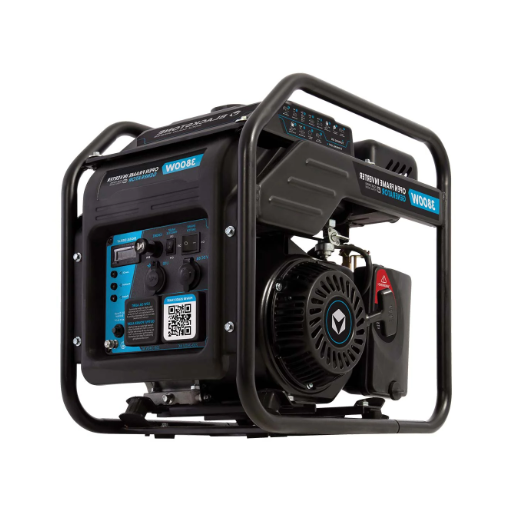
Choosing the Right Generator for Your Needs
Choosing a generator to back up your power at home requires detailing important techniques for assessing your unique needs and electrical demands. There is a need to start with a calculation on the total power that should be obtained from the appliances for each of the appliances deemed essential during a power outage. In this case, running wattages and starting wattages will also have to be factored, which in simple terms means motors and appliances will need greater power during start-up. It is of great importance to emphasize that the picked generator has adequate capacity to supply power to peak loads, or else there will be a likelihood of getting overloaded.
The first thing you want to check is the type of generators available, as modern generators have various types, which include portable generators and standby generators, and inverter generators as well. Standby generators will provide automatic power the moment there is a power outage. But professional installation is a requirement, making the overall cost very steep. The portable generators are very cheap and also versatile, making them cost-effective. However, these portable engines will require a person to manage the setup and all fuel controls. Inverter generators might be small in size, but economically prove to be the most expensive. That said, they use less fuel, ensuring cleaner power comes out, which makes them ideal for use with sensitive electronics.
Furthermore, think about the best fuel type for your requirements, such as gasoline, diesel, dual-fuel systems, or propane. Consider fuel availability in your region, efficiency, and how long the equipment can run. Assessing ease of use and performance, check for features like noise level ratings, remote monitoring, and automatic voltage regulation. Those factors, combined with the most recent developments in generator technology, will ensure dependable standby power for your home after thoughtful evaluation of your household power requirements.
Comparing Portable Generators for Emergencies
When evaluating portable generators for emergencies, it is equally important to consider several factors. Foremost, focuses on power output (watts) to determine if the generator can sufficiently run appliances such as refrigerators, medical equipment, and other essential tools. For example, smaller units cater for up to 2,000 supplementary watts while larger units furnish 7,500 watts or more, which are sufficient for general household usage.
Fuel type and capacity directly influence operational efficiency and run time. Equipment featuring larger fuel tanks vastly benefit in prolonged emergencies. Models that operate using gasoline and propane (dual fuel) fuel offer more flexibility and extended use. Also take note of fuel consumption rates as they determine the overall cost during prolonged use.
Other than the aforementioned factors, technological features can improve a generator’s practicality significantly. Units with inverter technology provide sensitive electronics with stable power and are thus significantly safer. Besides that, noise levels, usually expressed in decibels (dB), ought to be factored in since quieter models invariably increase comfort during lengthy outages. Remote start and onboard monitoring tools, which include digital displays and app-based controls, enhance user convenience.
Increased reliability is especially important for units subjected to heavy use or harsh weather conditions, which is offered by all-weather enclosures and other sturdy components. These tips can help one make a thoughtful decision regarding purchasing a portable generator that meets both short and long-term emergency readiness needs.
Factors to Consider: Fuel, Size, and Noise Levels
Evaluating fuel type, size, and noise level all impact the optimal decision when purchasing a portable generator. A generator’s fuel type impacts cost, usability, and storability. The most common fuel types are gasoline, diesel, and propane. Gasoline is conveniently accessible, but prone to spoiling quickly. Conversely, diesel and propane are more efficient and can be stored for prolonged periods, provided they’re stored under the right conditions.
Generators are sized according to the power output, thus making their size critical for the electrical load. To power household items like refrigerators, sump pumps, and lights, a generator rated between 5,000 to 7,500 watts should suffice. For industrial use, equipment with a power output of more than 10,000 watts is likely to be required. Ensuring that the load requirements are evaluated before making certain that operational efficiency can be maintained without overloading the unit.
Consideration of noise levels for residential and recreational uses should be done with utmost attention. The level of noise produced by a generator is expressed in decibels (dB). The quieter models are suited for urban settings or camping and usually range from 50 to 65 dB. Generators that produce lower noise levels are more sophisticated in design, such as those with advanced mufflers or sound enclosures.
How Does a Wattage Calculator Work?

Understanding Running Watts vs. Starting Watts
Running watts and starting watts are two different aspects that need attention while determining power requirements for a generator. Every device is referred to as having running or continuous watts, which showcase the level of power required to keep the device operating. On the other side of the spectrum, starting watts or surge watts are defined as the excess temporary power demand to start electric motor-powered devices like refrigerators, air conditioning units, and similar appliances. In essence, these devices have certain peak power requirements during start-up, which is followed by a drop to a steady level that the device consumes for its operation.
For estimating the right generator capacity, consideration of both running and starting watt needs is a requirement. An example is an air conditioner that may need up to 2,400 starting watts while its running watt requirement hovers around 2,000. Calculating the approximate starting watt requirements of all appliances presumed would be in use at the same time provides better derivations of the generator capacity required. Most modern wattage calculators allow users to specify equipment data, which ensures dual value estimates and personalization-based accuracy. This guarantees precise generator capability without underestimating or overloading the power supply demanded.
Wattage calculators use the latest data from equipment manufacturers and energy standards to run updates and refine their calculations. These tools take into account the energy profiles of multiple devices, including possible load control devices that manage power consumption during peak times. Through the use of such calculators, decisions become easier to make, particularly when dealing with complex systems, whether in a home or business setting, where power planning requires precision for safety and efficiency.
Using a Generator Sizing Calculator Online
Finding the best generator to safely and efficiently power a system can now be done at the click of a button thanks to online generator size calculators. These calculators have algorithms considering the type and number of appliances, usage patterns, the starting and running wattage of devices, and the amplifiers’ watt usage. Without any interruptions or loss of efficiency, the generator can now be optimally suited to the electrical demand after utilizing this accurate determination tool.
Contemporary generator size calculators now come with energy efficiency benchmarks and digital data centers. Seasonal energy consumption changes or special plans like emergency power demand. With these features, there is a lower likelihood of miscalculating boost or choke systems, which, in all scenarios, is cost, hazard, and effort investment avoidance. For example, not calculating adequately required power can lead to equipment failure in critical operations; on the other hand, overestimating would incur superfluous expenditure as equipment would exceed requirements and result in wasteful expenditure.
Moreover, many of these calculators allow users to gauge the differing generator models while assessing extra attributes like fuel conservation, noise production, and ecofriendliness. This seamless blend of wit and strategy provides a single platform to guide users in identifying the right-sized generator that fuses qualitative and quantitative attributes.
How to Select the Right Portable Generator?

Determining Your Power Needs for Camping or Recreational Use
The first thing I do to identify the right portable generator for camping or recreational use is determine the total wattage of all devices that I plan to run. This includes identifying all appliances such as lights, small refrigerators, and chargers, and determining their running watts and starting watts. The additional power, starting watts, which are needed when a device turns on, is normally much higher than running watts and has to be considered in the total load estimation. These metrics will inform planning so the generator can run several devices at the same time.
Another factor I look into is how long I will need the power for. For example, if I am using power for a longer period, I will investigate further into the generator’s fuel efficiency and runtime. Most camping generators are suited for remote trips as they tend to have longer runtimes with a higher fuel tank or inverter technology. Other additional features I also look into are eco-mode, which allows for adjusting the engine speed based on load levels, resulting in better fuel efficiency.
Lastly, I consider portability and environmental issues. Handheld or wheeled generators are more portable, especially in rough areas. The noise level is also an important factor to note. While camping, I consider generators that produce under 65 dB to keep the tranquility of nature. This integrated approach helps me meet my power requirements while still enjoying the convenience and environmentally friendly features of the generator.
Using a Calculator to Determine the Right Size
To properly size a generator, a generator calculation method step by step has to be done so that it is capable of coping with the expected power load, maximizing efficiency with minimum effort. The process becomes easier with the help of a wattage calculator, which provides accurate calculations for the total wattage requirements. Start with a list of all devices and appliances that you want to use, bearing in mind both running wattage and starting (surge) wattage. Usually, this information can be located on the device label or the manual provided by the manufacturer.
Air conditioners and washing machines also fall into this category, as they all contain surge wattage greater than the required amount needed for normal operation. These values need to be summed up along with lower-consuming devices like lights or chargers. The overall result provides a total. A safety margin of approximately 20-30% needs to be added to compensate for any unforeseen consumption or extra devices that might be added down the road.
After calculating all the available wattage, a generator’s capacity will need to be brought up to this value. An undersized one may suffer overheating and excess wear, while a generator that is too big risks becoming unnecessarily wasteful with fuel. The lifespan of the generator, along with the operational efficiency, is best achieved by utilizing an online wattage calculator.
What Are the Steps to Use Your Generator Safely?

Setting Up and Running Your Generator Correctly
For optimum safety and efficiency in the operation of your generator, complete the following tasks in the provided sequence:
- Choose a Suitable Location: The generator should be kept in a ventilated area (preferably outside) that is at least twenty feet from the house, Windows, doors, and vents. This distance will prevent carbon monoxide (CO) from accumulating. Ensure that the surface where it’s placed is even, as any tipping can damage the generator when it is on.
- Check the Generator Before Use: Make sure that the generator has no damage in terms of parts that may be loose, visible damage, or leaks. Check the oil and fuel levels. Both of them should be as per company standards. For optimal performance, use fuel that is fresh and has stabilizers in it. Corrosion is also undesirable; make sure laughter fuel meets acceptable standards.
- Connect Loads Safely: Ensure that the electrical loads are disconnected before turning on the generator. The generator should be connected to the appliances using outdoor-rated and heavy-duty extension cords. Make sure that if the generator’s output is below the device’s wattage, it will not get overloaded.
- Starting the Generator: The generator’s start-up procedure requires you to follow the manufacturer’s guidelines. These steps usually consist of turning the fuel valve to “On,” engaging the choke, pulling the starter cord, or pressing the electric start button. It is also advised to let the generator stabilize for few minutes before load connection.
- Monitor Operation: The fuel and oil levels of the generator, as well as the alert indicators and sounds, have to be checked periodically over the duration of operation. The generator user manual should be followed to the letter, and do not attempt modification or circumvent safety protocols.
- Disabling the Generator: The generator needs to have its loads disconnected prior to shutting it down. It should have an unloaded cool down. After draining the fuel, the generator should be stored safely away.
Practical application of these will help minimize generator associated risks of electrical danger, CO emission hazards, and system failure.
Understanding Total Wattage Capacity
An absolute essential metric when it comes to choosing a generator is its total wattage capacity. It’s determined by estimating the wattage demands of all the loads connected. Generators are usually rated with two values of wattage. Running wattage indicates the amount of continuous power a device can yield, while surge wattage accounts for the higher power surge that devices require during start-up. As an example, a fan might use only 700 running watts but during start-up could surge to over 2,000 watts.
To optimize the performance of generators, it’s advised to add the total required wattage and combine it with the running wattage. This, in turn, allows some bypass for startup surges. To make sure that the calculations are correct, always use the label data that is provided on the equipment or the user manual. Using a generator that is lower than the required capacity will produce an overload, which can drastically decline performance and even lead to destroying the device. A generator that operates with a significant level of unutilized fuel, on the other hand, will go through inefficiency issues.
Users can take advantage of generator performance due to modern advancements in energy technologies. Critical devices can be prioritized and electrical loads can be evenly distributed using certain tools like wattage calculators or load management systems. Total wattage capacity can be assessed and managed accurately, maximizing efficiency while prolonging the lifespan of the generator and its connected appliances.
Precautionary Measures for Backup Power
To ensure proper functionality of backup power systems, all safety precautions must first be taken into account. For instance, double-check that the area is properly ventilated before installing the backup generator to prevent any unnecessary buildup of carbon monoxide. Placing generators at a minimum of 20 feet away from windows, doors, and vents should be taken to mitigate risks. Additionally, ensuring the generator is grounded also avoids generator shock, which complies with the National Electrical Code (NEC) standards.
Routine maintenance also cannot be neglected, the system must be inspected continuously for fuel and oil levels, along with possible wear of components. Taking measures such as using stabilized fuel or rotating the fuel supply every 6 months prevents stored fuel from degrading. Lastly, modernized backup systems tend to use automatic transfer switches (ATS) that aid in the automatic detection of outages, which allows them to shift loads and switch from the utility grid to the generator. These systems allow the ATS to be properly configured for both timely activation as well as the longevity of the equipment.
It is critical to ensure that the generator has the capacity for the power requirements of the appliances before plugging them into the generator. Powering the generator beyond its capacity poses a risk of overheating, which will subsequently reduce its efficiency. Using surge protectors and voltage regulators will also protect the more delicate electronics from damage due to voltage changes during operation.
As the backup power systems are being used, everyone who uses the generator should understand how the emergency shutdown procedure works and how to navigate the manual. Being knowledgeable about the aspects related to the generator and undertaking proper and timely maintenance will ensure that power is available and dangerous situations are avoided.
References
Frequently Asked Questions (FAQs)
Q: What is a generator sizing calculator, and how does it help?
A: A generator sizing calculator is a tool that helps you determine your electrical power needs by calculating the total kilowatts (kw) required for your specific purposes. This ensures you find a generator that can handle the power draw of all devices you intend to use.
Q: How do I use a generator sizing calculator to determine my power needs?
A: To use a generator sizing calculator, input the wattage of each device you intend to use. The calculator will perform the necessary calculations, using a formula to determine the total kilowatt (kw) requirement for your specific needs.
Q: Can I use a generator sizing calculator for both home and construction purposes?
A: Yes, you can use a generator sizing calculator to find the right home generator or portable generator sizing for construction purposes. It helps in determining the correct power output needed for different applications.
Q: Should I consult a certified or licensed electrician when using a generator sizing calculator?
A: Yes, it is advisable to consult a certified or licensed electrician to verify your calculations, especially if you are unsure about your electrical power needs. They can ensure that the generator you choose is suitable for your intended use.
Q: Is there a chart available to assist in generator sizing calculations?
A: Many generator sizing calculators include a chart that lists common devices and their typical power draw, which helps in performing accurate calculations for your specific requirements.
Q: What factors should I consider when using a calculator for generators?
A: Consider the total power draw of all devices, the purpose of the generator, and whether the usage is continuous or intermittent. These factors will influence the size and type of generator you need.
Q: How can I determine the power draw of my appliances?
A: Check the data plate on each appliance for its wattage, or refer to the manufacturer’s specifications. This information is crucial for an accurate calculation of your power needs.
Q: Are there any formulas involved in generator sizing calculations?
A: Yes, generator sizing calculations typically involve formulas that calculate the total kilowatt (kw) requirement based on the sum of the wattages of all devices you intend to use simultaneously.




